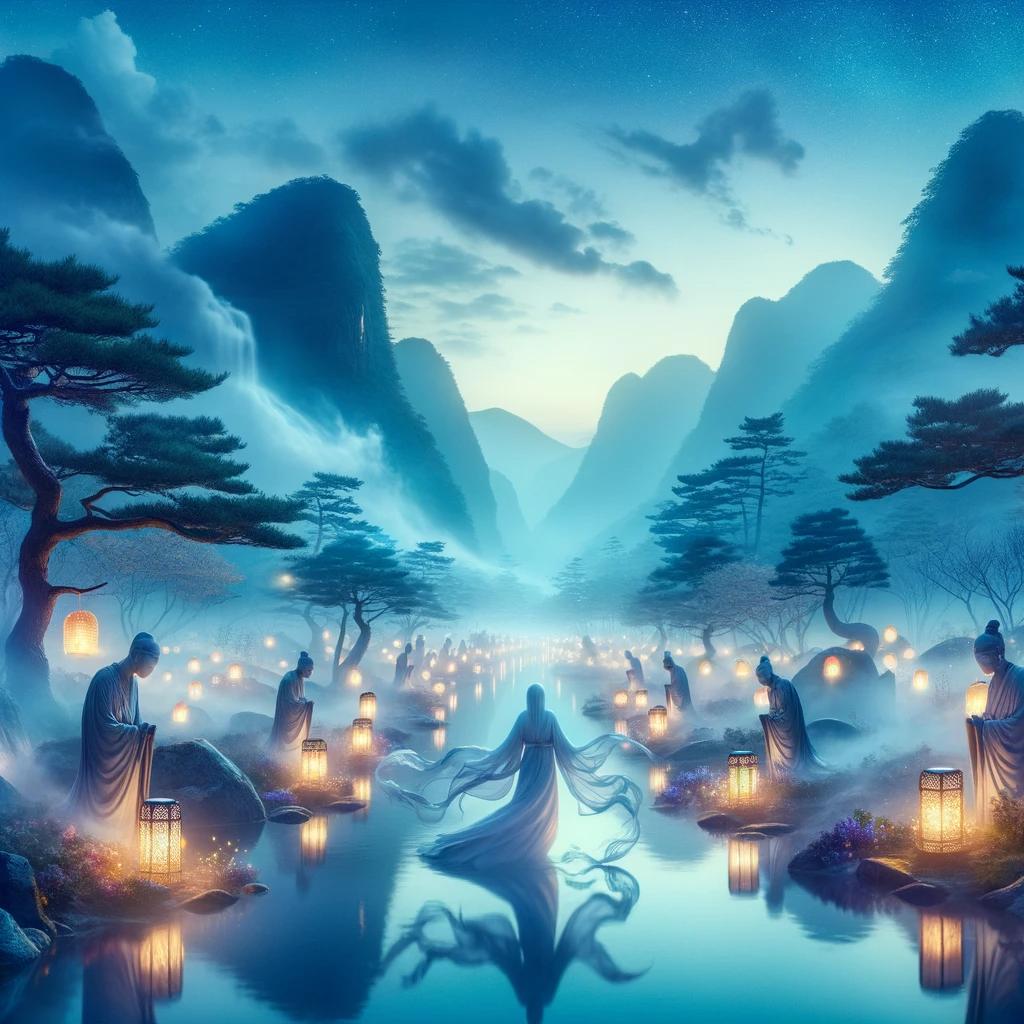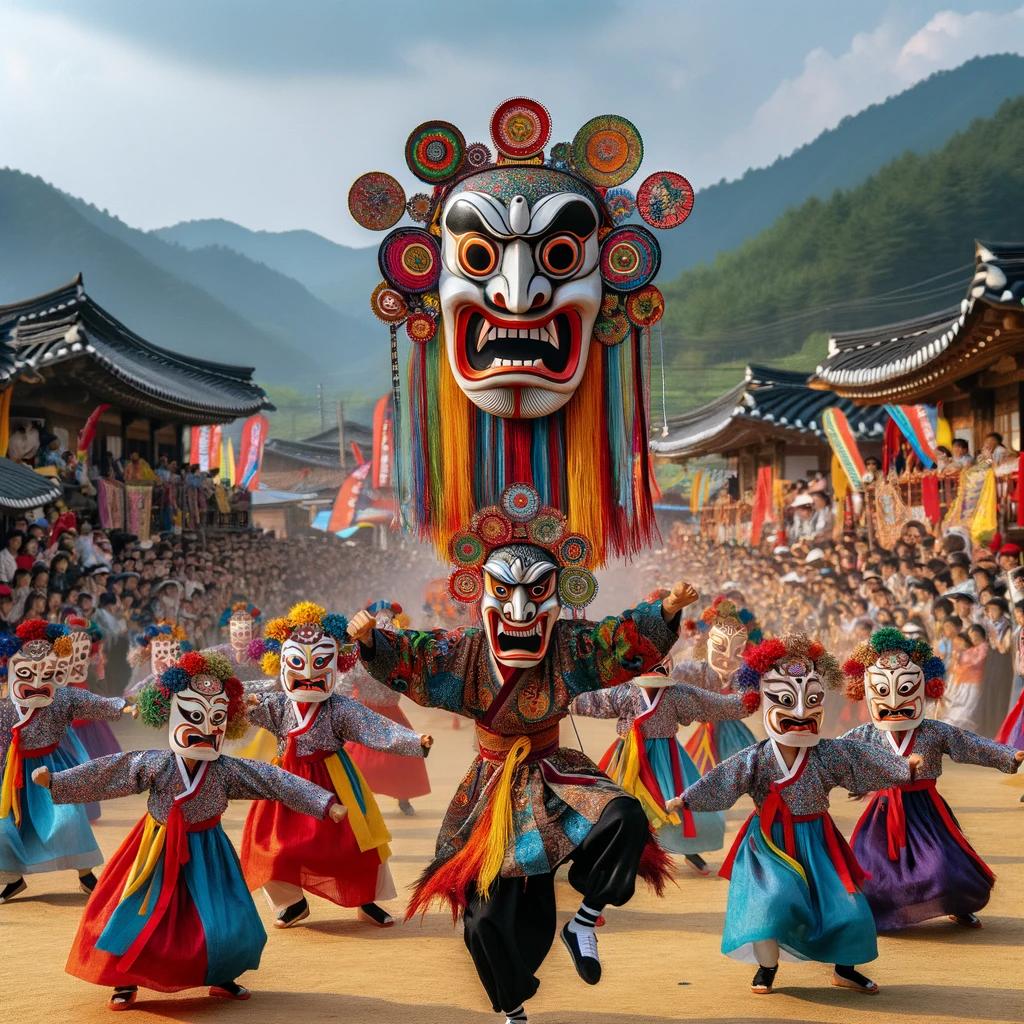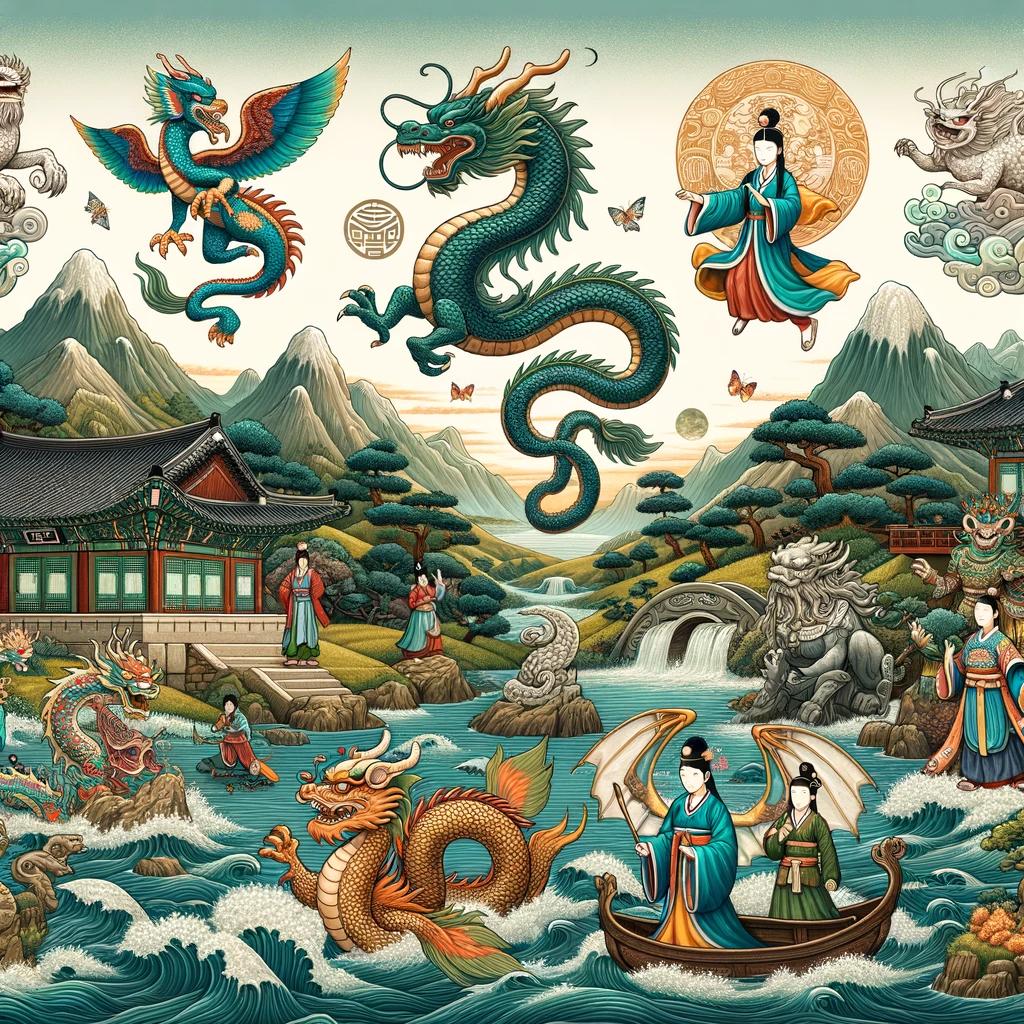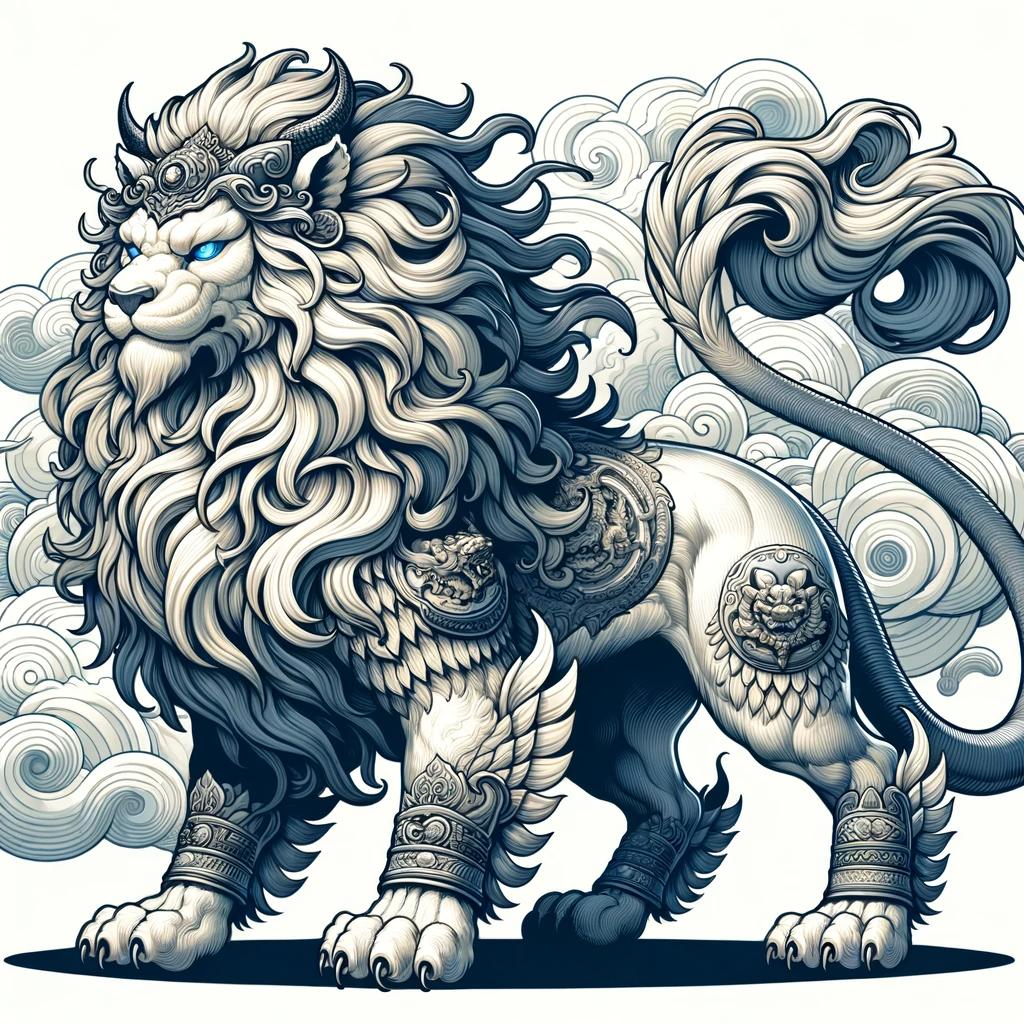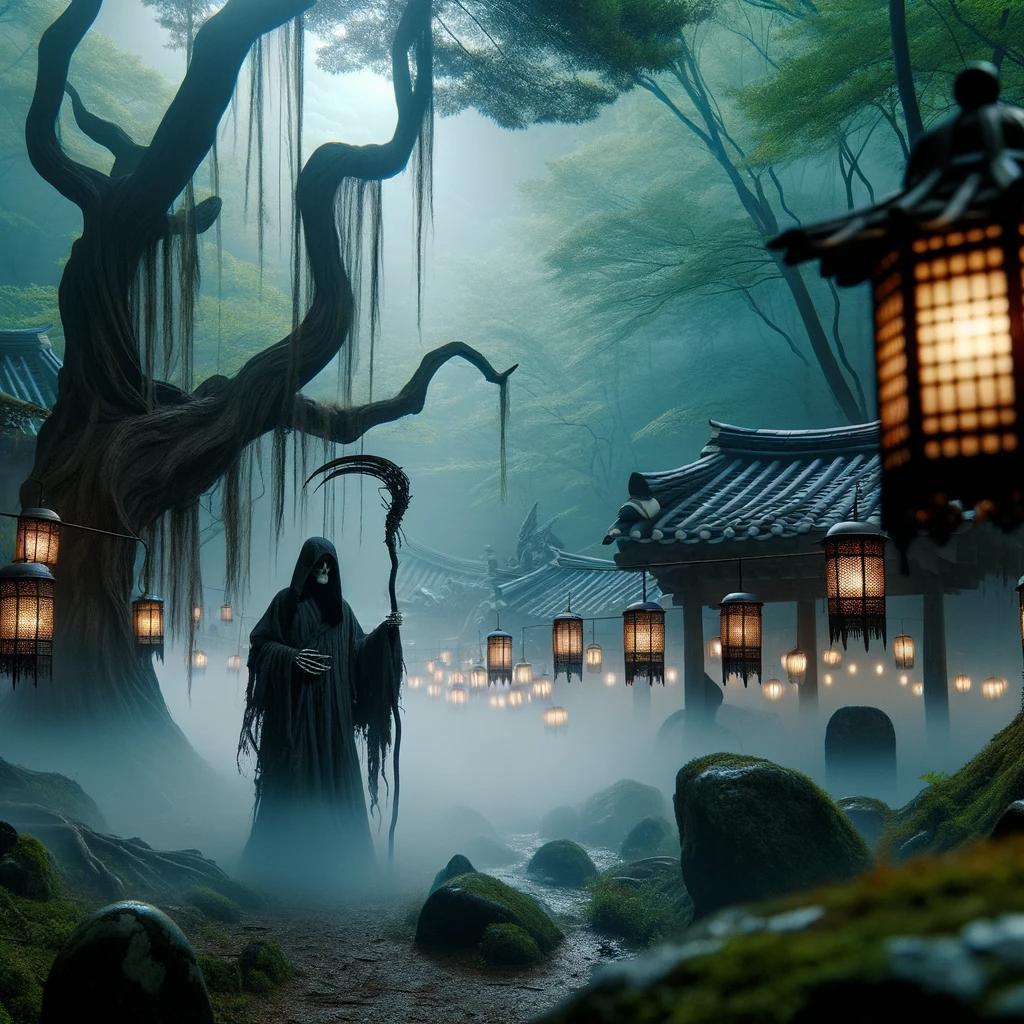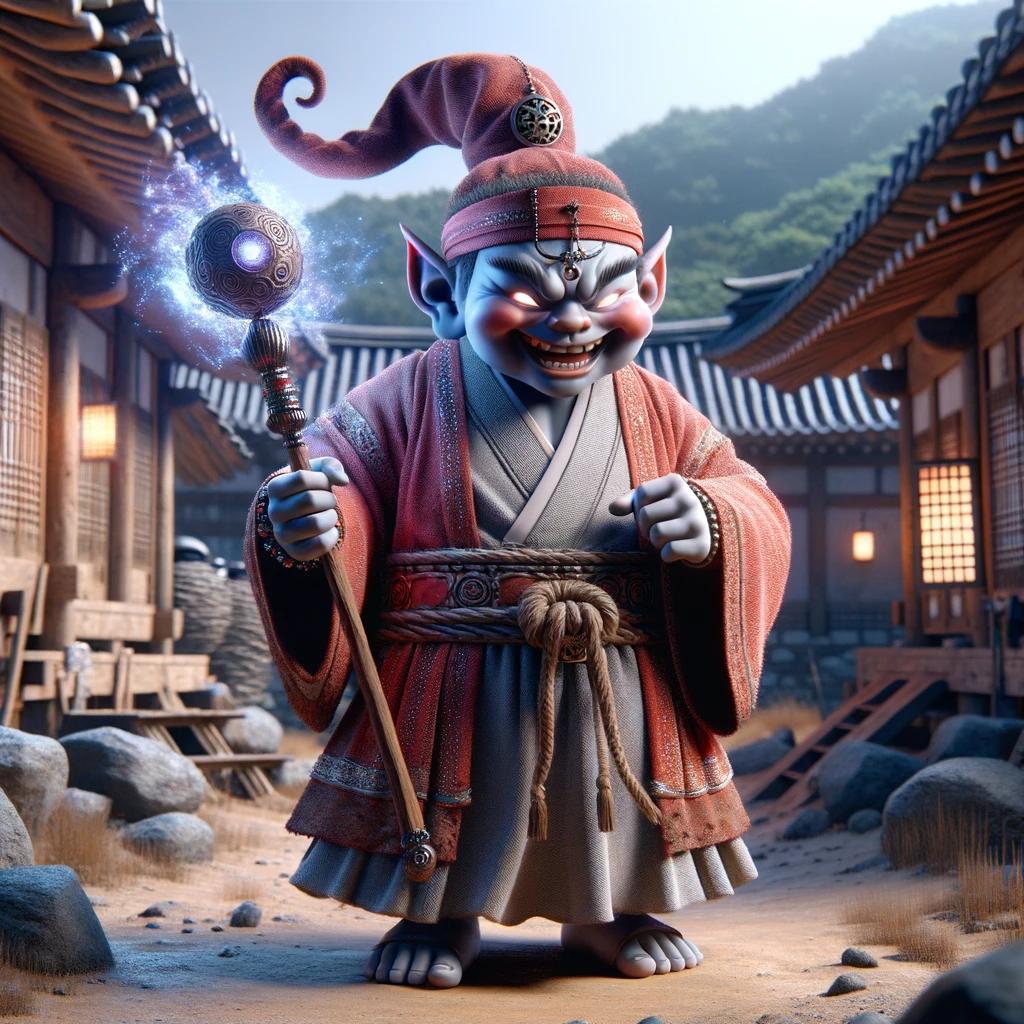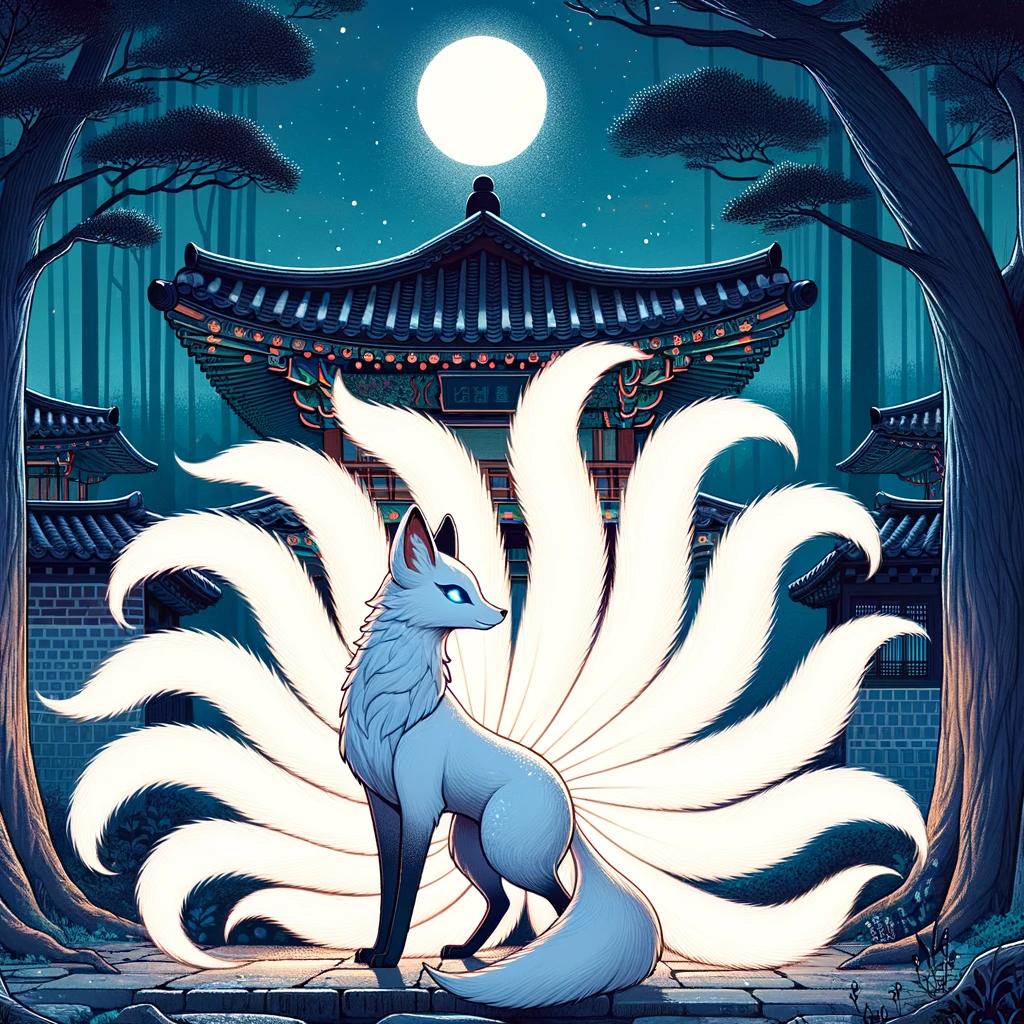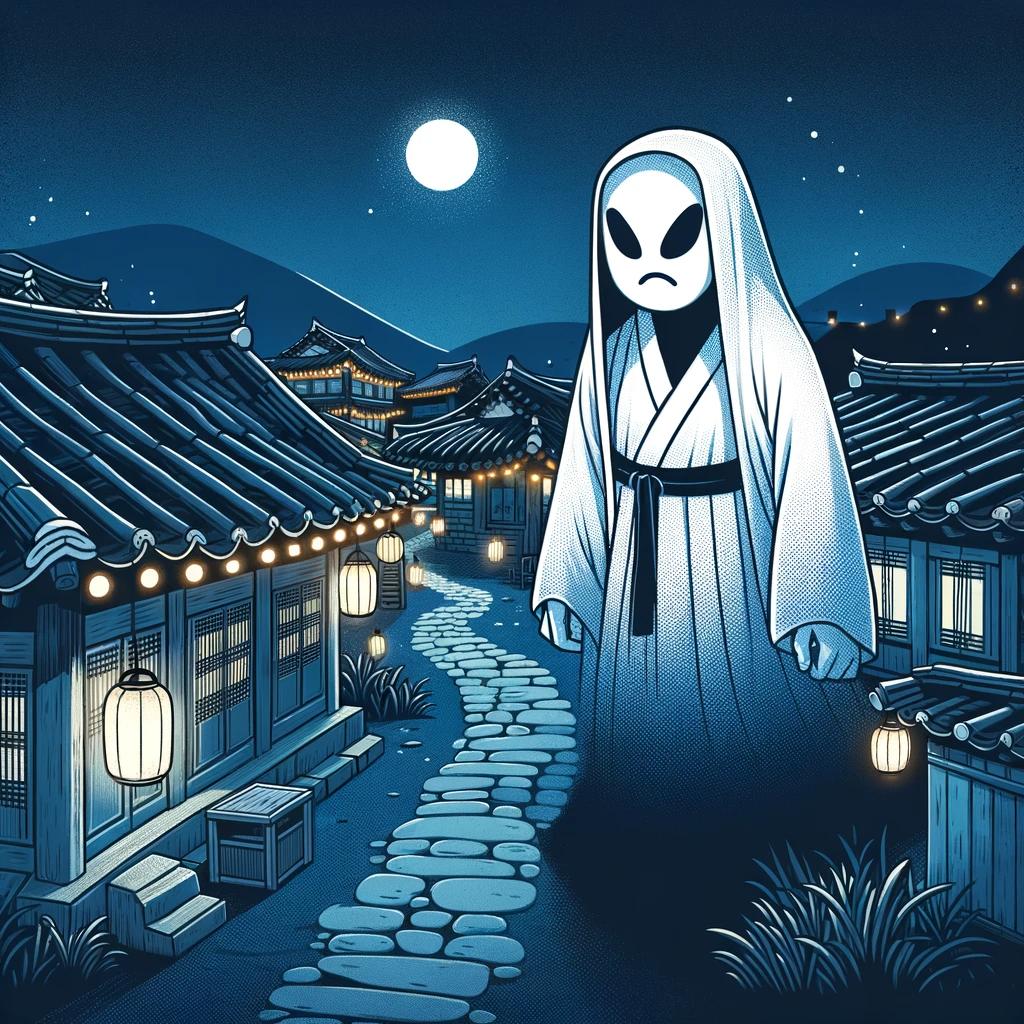Korean Mythology Afterlife: Exploring the Beliefs and Legends of the Korean Afterlife
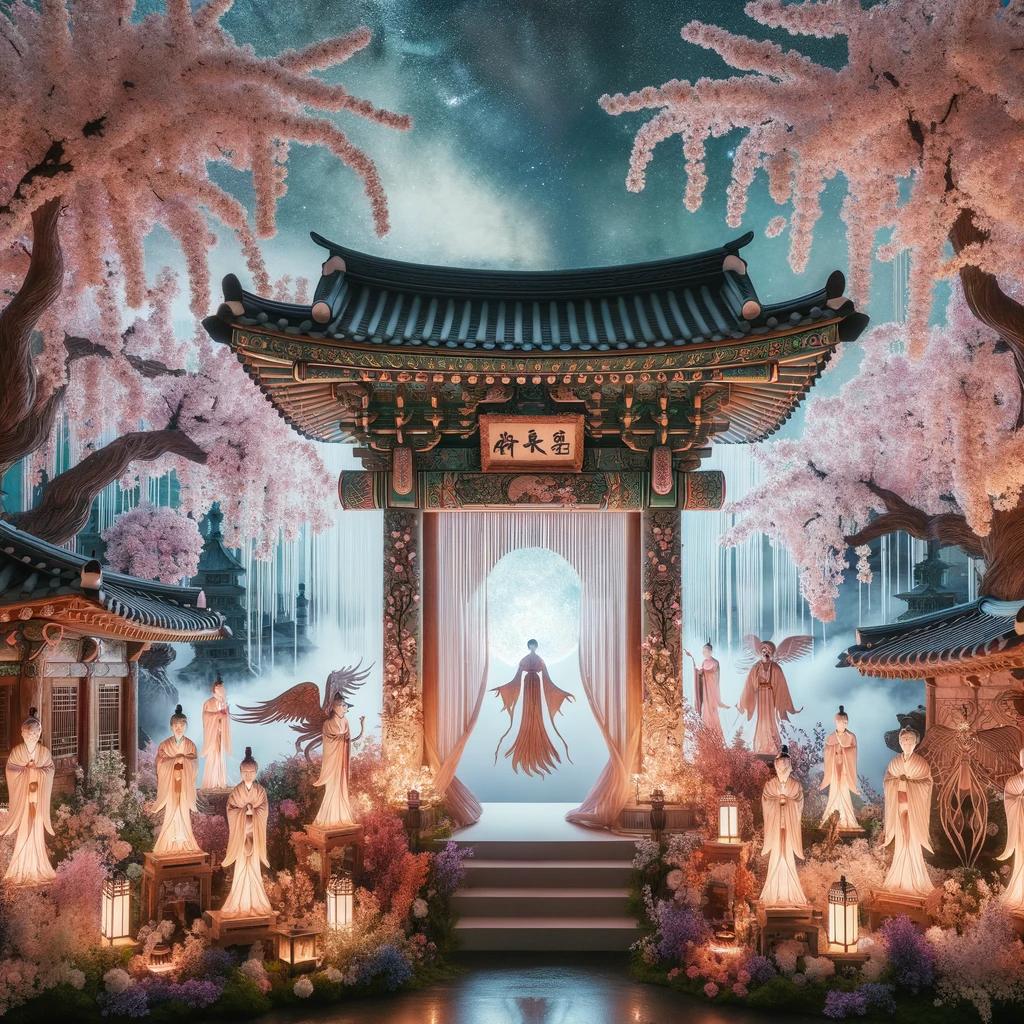
Korean Mythology Afterlife delves into the beliefs and legends surrounding the afterlife in Korean culture. It explores the origins of Korean mythology, the ten realms of the underworld, and the role of the ten kings in judgement and punishment.
The article also examines rituals, mythical creatures, and ancestral worship practices associated with the Korean afterlife. Additionally, it explores the impact of Korean mythology on modern society, symbolism in art and literature, misconceptions, and the continued relevance of these beliefs in contemporary Korean society.
Origins of Korean Mythology Afterlife
The origins of Korean mythology afterlife are deeply rooted in the historical background of Korean culture. Ancient Korean civilizations developed unique beliefs and understandings about the afterlife, which continue to shape the cultural and spiritual practices of the country today.
Historical Background of Korean Mythology
The historical background of Korean mythology offers insights into the rich tapestry of beliefs that influenced the concept of the afterlife. Ancient Korean civilizations, such as the Three Kingdoms period (57 BC – 668 AD) and the Goguryeo Kingdom (37 BC – 668 AD), played significant roles in shaping these beliefs.
They drew inspiration from various sources, including indigenous shamanistic traditions, Taoism from China, and Buddhism from India, creating a unique blend of cultural and spiritual influences.
Development of Beliefs on the Afterlife in Korean Culture
Over time, the development of beliefs on the afterlife in Korean culture became more structured and defined. In the Sui and Tang Dynasties of China during the 7th century AD, ideas about the underworld and the Ten Kings of the Underworld began to solidify and standardize.
It was believed that the souls of the deceased would be judged based on their actions in life and then assigned to one of the Ten Realms of the Underworld according to their karma.
Each of these realms was governed by a specific King.
As Korean shamanism evolved, it incorporated these beliefs into its practices, giving rise to a unique understanding of the afterlife and the Ten Kings in Korean mythology. The Ten Kings, known as ‘Siwang,’ are seen as powerful and fearsome figures who determine the fate of the deceased souls.
Their judgment determines whether souls will be rewarded or punished in the afterlife, reflecting the deeply ingrained belief in karma and moral responsibility.
The development of beliefs on the afterlife in Korean culture is a testament to the cultural resilience and adaptability of Korean mythology. It continues to play a significant role in the spiritual practices and cultural traditions of contemporary Korean society.
Understanding the Korean Afterlife Realm
The Korean Afterlife Realm holds deep significance in Korean mythology, serving as the realm where departed souls journey after death. This section explores the intricacies of this realm, shedding light on its structure and the role of the Ten Kings in Korean afterlife beliefs.
The Inframundo and Its Ten Realms
The Inframundo, or the underworld, is composed of ten distinct realms, each governed by a specific king. These realms represent different stages of the afterlife journey, and the souls of the deceased are judged according to their actions in life and subsequently assigned to a particular realm based on their karma.
The Ten Realms of the Korean Afterlife consist of the realm of the Supreme King, the realm of the Sages, the realm of the Enlightened, the realm of the Majestic, the realm of the Refined, the realm of the Temporary, the realm of the Distorted, the realm of the Abandoned, the realm of the Stallions, and the realm of the Resultants.
Role of the Ten Kings in Korean Afterlife Beliefs
The Ten Kings of the Korean Afterlife are revered as powerful figures who hold the fate of the deceased souls. They act as judges, meticulously evaluating the deeds and intentions of the departed, determining their punishments or rewards accordingly.
Each of the Ten Kings has a specific role and responsibilities in the judgment process. They possess supernatural powers and have the authority to deliver punishments, penances, and sufferings to souls who have committed wrongdoings in their lifetime.
Conversely, virtuous souls are rewarded with a peaceful and blissful existence in the afterlife.
Some of the prominent Ten Kings include Yanluowang, the Supreme King, who serves as the ultimate judge and ruler of the underworld, along with kings ruling over realms such as the realm of the Hungry Ghosts, the realm of Animals, the realm of Asuras, and the realm of Demons, among others.
The beliefs surrounding the Ten Kings in Korean afterlife mythology have evolved and been influenced by cultural traditions and religious practices over time, shaping a unique perception of the afterlife and its rulers in Korean culture.
- Supreme King – The highest authority, governing the judgment and rule of the entire afterlife realm
- Hungry Ghosts King – Responsible for souls suffering from insatiable hunger and thirst
- Animals King – Oversees the realm of animals, where souls are reincarnated as various creatures
- Asuras King – Judges those souls who were consumed by anger and jealousy in their earthly lives
- Demons King – Presides over souls who committed malicious acts in life, seeking redemption or punishment
The Ten Kings in Korean afterlife beliefs hold a significant place in the cultural and spiritual fabric of Korea, representing a complex belief system with profound implications for the journey of the departed souls.
The Judgment Process in Korean Mythology
The judgment process in Korean mythology plays a significant role in shaping the afterlife beliefs of Koreans. It involves the evaluation of a person’s actions and determining their fate in the next realm.
The criteria for judgment are based on moral and ethical principles, reflecting the values deeply ingrained in Korean culture.
Criteria for Judgment in Korean Afterlife Beliefs
According to Korean afterlife beliefs, individuals are judged based on their deeds during their lifetime. The criteria for judgment encompass a range of factors, including acts of kindness, moral behavior, and adherence to societal norms.
Virtuous actions, such as showing respect to elders, being filial to parents, and helping others, are highly regarded and can lead to favors in the afterlife.
Conversely, negative behaviors, such as dishonesty, cruelty, and disrespect, are seen as detrimental and may result in punishments or unfavorable outcomes.
The moral code within Korean mythology afterlife focuses on upholding social harmony and emphasizes the importance of personal conduct in shaping one’s destiny.
Punishments and Rewards in the Korean Afterlife
In Korean mythology, the afterlife is not just a realm of judgment but also a place where punishments and rewards are meted out.
The punishments aim to correct the wrongdoings committed during a person’s lifetime, allowing for spiritual growth and eventual rebirth. Conversely, rewards are bestowed upon those who have led virtuous lives.
- The punishments in the Korean afterlife vary depending on the severity of the offenses.
They may include experiences of suffering, torment, or enduring penitential ordeals designed to cleanse the soul.
- Rewards in the Korean afterlife can range from a peaceful existence in a specific realm to reincarnation into a higher social or spiritual status.
These rewards are meant to recognize and honor the virtues exhibited during one’s lifetime.
It is through this system of judgment, combined with punishments and rewards, that the afterlife in Korean mythology presents a moral framework, encouraging individuals to strive for virtuous actions and to coexist harmoniously within society.
Mythical Creatures and Entities in the Korean Afterlife
In Korean mythology, the afterlife is inhabited by various mythical creatures and entities that play significant roles in the journey of the deceased.
Guardians and Guides of the Deceased
Within the Korean afterlife, there are powerful beings known as guardians and guides who help navigate and protect the souls of the deceased. One prominent guardian is Dokkaebi, a mischievous supernatural creature often depicted as a horned goblin.
Dokkaebi is believed to safeguard the boundary between the mortal world and the afterlife, ensuring that souls reach their proper destinations.
Another important figure is the Sanshin, the Mountain God.
In Korean mythology, mountains are considered sacred, and the Sanshin is believed to watch over and guide spirits to their ancestral resting places. The Sanshin is often depicted as an elderly man, dressed in traditional garments and holding symbols of authority.
The Role of Ancestors in Korean Afterlife Beliefs
Ancestral veneration holds great importance in Korean culture, and the afterlife is closely linked to the idea of honoring and communicating with ancestors. The spirits of deceased ancestors are believed to have a continued presence in the lives of their descendants.
In Korean afterlife beliefs, ancestral spirits are revered and treated with respect. An ancestral shrine, known as jesa, is often set up in homes to pay homage to deceased family members.
During rituals, offerings of food, drink, and other items are presented to the spirits as a sign of remembrance and respect.
Additionally, ceremonies and festivals such as Chuseok, also known as Korean Thanksgiving, focus on honoring ancestors by visiting their graves and making offerings.
These practices serve as a way to maintain the connection between the living and the deceased, fostering a sense of continuity and familial bond.
In conclusion, within Korean mythology afterlife, mythical creatures and ancestral spirits play vital roles.
Guardians and guides ensure the safe passage of souls, while ancestral veneration ensures the continued presence and respect for deceased family members. These beliefs and practices provide a framework for understanding the spiritual realm beyond death in Korean culture.
Rituals and Practices for the Deceased in Korean Culture
The rituals and practices surrounding the deceased play a significant role in Korean culture and are deeply rooted in Korean mythology. These customs aim to honor and remember the departed souls while providing comfort and support for the grieving family.
Ancestral Worship and Veneration in Korean Mythology
Ancestral worship holds great importance in Korean mythology and culture. It is believed that ancestors continue to exist in the afterlife and have the ability to influence the lives of their descendants.
In accordance with this belief, Korean families perform ancestral rituals to pay homage, show respect, and seek blessings from their ancestors.
During these rituals, families gather at ancestral shrines or memorial halls, adorned with portraits or tablets representing their ancestors.
Offerings such as food, drinks, and incense are presented to the deceased as a means of honoring and providing for them in the afterlife. Ancestral worship serves as a way to maintain a strong connection with one’s heritage and to reinforce family ties across generations.
Funerary Rites and Mourning Customs in Korean Tradition
Funerary rites in Korean tradition are elaborate and carefully observed to show respect for the deceased and assist their journey to the afterlife. Upon the death of a loved one, the family begins preparations for the funeral, which often includes washing and dressing the body, as well as anointing it with oils or perfumes.
Mourning customs vary depending on the relationship to the deceased and the region but typically involve a period of grieving and remembrance. Family members and friends gather to pay their respects, express condolences, and offer support to the bereaved.
Traditional mourning attire, composed of white clothing, is often worn as a symbol of mourning and solemnity.
Throughout the mourning period, customs such as memorial services, prayer rituals, and chanting are performed to guide the departed soul to the afterlife and to provide spiritual comfort to the living.
These practices serve as a way to cope with loss, facilitate the healing process, and ensure a peaceful transition for the deceased.
- Honoring ancestors through ancestral worship
- Performing rituals to pay homage and seek blessings
- Funerary rites including washing, dressing, and anointing the deceased
- Observing mourning customs such as memorial services and prayer rituals
- Wearing traditional mourning attire as a symbol of respect
These rituals and practices surrounding the deceased reflect the deep reverence for ancestors and the belief in the continuity of life beyond death in Korean culture.
They provide solace for the grieving, preserve cultural heritage, and foster a sense of identity and connection to the past.
Influences of Korean Mythology Afterlife in Modern Society
Cultural Significance and Preservation Efforts
The mythology of the Korean afterlife holds immense cultural significance in modern society. It is deeply rooted in the beliefs and traditions of the Korean people, shaping their worldview and spiritual practices.
Efforts have been made to preserve and promote these cultural aspects, ensuring that future generations continue to appreciate and understand the rich heritage of Korean mythology. Museums, cultural centers, and educational initiatives play a crucial role in preserving artifacts, manuscripts, and oral traditions related to the afterlife in Korean mythology.
Additionally, festivals and rituals celebrating the Korean afterlife are organized to honor ancestors and connect with ancient beliefs. These cultural events not only highlight the importance of the afterlife in Korean culture but also serve as a bridge between past and present, enabling the transmission of cultural values and traditions across generations.
Popularity of Korean Afterlife in Media and Entertainment
The allure of Korean mythology’s afterlife extends beyond cultural and religious contexts. In recent years, its influence has permeated various forms of media and entertainment, capturing the fascination of audiences worldwide.
Korean dramas, movies, and literature often incorporate themes and elements inspired by the afterlife, providing a glimpse into the mystical realm of Korean mythology.
From suspenseful tales of supernatural beings to heartwarming stories of ancestral spirits, these creative works offer a unique perspective on Korean afterlife beliefs.
The popularity of Korean pop culture, commonly referred to as the “Hallyu wave,” has significantly contributed to the global recognition and appreciation of Korean afterlife mythology.
With the rise of streaming platforms and international collaborations, the reach of Korean media has expanded, allowing a broader audience to experience and appreciate the enchanting world of Korean afterlife mythology.
This growing popularity not only generates interest but also fosters cross-cultural understanding and appreciation for the cultural heritage of Korea.
Understanding the Symbolism in Korean Mythology Afterlife
The symbolism in Korean Mythology Afterlife holds deep cultural significance and reflects the beliefs and values of Korean society. It offers insight into their perception of the afterlife and the journey of the souls.
Exploring these symbolic representations and meanings provides a profound understanding of Korean afterlife beliefs.
Symbolic Representations and Meanings in Korean Afterlife Beliefs
• Colors:
- White symbolizes purity and rebirth, representing a positive outcome in the afterlife.
- Black signifies sorrow, darkness, and negative consequences for the soul’s journey.
- Red represents passion, desire, and potential punishment for immoral actions.
• Animals:
- The white tiger, symbolizing strength and protection, serves as a guardian during the soul’s journey.
- The magpie, associated with communication between the living and the dead, represents hope and good fortune.
- The dragon, a celestial creature, signifies power, wisdom, and spiritual transcendence.
• Objects:
- Lotus flowers symbolize enlightenment, purity, and detachment from worldly desires.
- Coins are offerings for the deceased, symbolizing wealth and prosperity in the afterlife.
- The Heavenly Bridge represents the crossing between the human world and the afterlife.
Cultural Impact and Symbolism in Art and Literature
The symbolic representations in Korean mythology afterlife heavily influence various forms of art and literature.
Through paintings, sculptures, and written works, these symbols are vividly depicted to convey the spiritual essence of the afterlife beliefs.
In traditional Korean art, symbolic motifs such as lotus flowers, dragons, and celestial beings are commonly featured, evoking the mystical realm of the afterlife.
These artistic expressions not only serve as visual representations but also carry cultural and spiritual significance, connecting the audience to their ancestral heritage.
Literature also plays a crucial role in exploring symbolism in Korean afterlife beliefs.
Poems, folktales, and epic narratives often incorporate these symbols to convey moral lessons, explore the human condition, and provide insights into the journey of the soul through the afterlife.
The symbolism in Korean Mythology Afterlife, both in artistic and literary forms, continues to captivate and resonate with modern audiences.
It serves as a reminder of the rich cultural heritage and spiritual traditions that shape Korean society today.
Common Misconceptions and Debunking Myths about Korean Mythology Afterlife
In the realm of Korean mythology afterlife, there are several common misconceptions that have arisen over time due to various interpretations and adaptations. It is important to address these misconceptions and debunk the myths to ensure a better understanding of Korean afterlife beliefs.
Let’s take a closer look at a few of these misunderstood aspects.
Dispelling Misunderstandings in Popular Culture
- Contrary to popular belief, the Korean afterlife is not solely focused on punishment. While some realms within the underworld serve as places of penance, there are also realms dedicated to rewarding virtuous souls.
It is a complex system that takes into account a person’s actions in life.
- Another misconception is the portrayal of the Kings of the Underworld as purely malevolent and cruel rulers.
In Korean mythology, these kings have the power to judge and punish, but they also strive for justice and fairness in their decisions. They act as guides and enforcers of spiritual balance.
- There is a prevalent idea that the afterlife in Korean mythology is rigid and without room for salvation.
However, redemption and the possibility of moving to higher realms do exist. Souls are given opportunities to learn and grow, eventually ascending to more favorable realms through their own efforts.
Addressing Controversial Interpretations and Modern Adaptations
- Controversial interpretations often arise when Korean mythological figures and concepts are merged with other mythologies or distorted for creative purposes.
It is essential to differentiate between accurate representations of Korean afterlife beliefs and exaggerated or incorrect portrayals.
- Modern adaptations, such as in films and literature, sometimes take artistic liberties with Korean mythology afterlife, resulting in inaccuracies and misunderstandings.
While these adaptations may make for entertaining storytelling, it is important to approach them with a critical eye and separate fact from fiction.
- As Korean culture gains international popularity, it is crucial to engage in discussions that foster cultural understanding rather than perpetuating stereotypes and misrepresentations.
By exploring the complexities and nuances of Korean afterlife beliefs, we can appreciate the rich mythology and spiritual traditions of this vibrant culture.
Exploring the Legacy of Korean Mythology Afterlife
As we delve into the legacy of Korean Mythology Afterlife, we uncover the profound influences it has had on Korean spiritual practices and beliefs.
Let us explore two key aspects in this regard:
Influences on Korean Spiritual Practices and Beliefs
Korean Mythology Afterlife has undoubtedly shaped and influenced various aspects of Korean spirituality. It has contributed to the development of rituals, ceremonies, and traditions that revolve around honoring ancestors and seeking guidance from the afterlife realm.
These practices, deeply rooted in Korean culture, have been passed down through generations, preserving the connection between the spiritual realm and the living world.
- The practice of ancestral worship, known as “Jesa,” plays a significant role in Korean spiritual practices.
Families pay respect to their ancestors by offering food, drinks, and other symbolic items to their ancestral tablets. This act not only shows reverence for the deceased but also reinforces the belief in the ongoing presence and influence of ancestors in daily life.
- The belief in the interconnectedness of the living and spirit worlds has also influenced shamanistic practices in Korea.
Shamans act as intermediaries between humans and spirits, channeling messages and seeking guidance from the afterlife realm. These rituals have both cultural and religious significance, providing comfort, solace, and a sense of connection to the spiritual realm.
- Another belief influenced by Korean Mythology Afterlife is the concept of reincarnation.
Some Korean religious and spiritual traditions believe in multiple lives and the cycle of rebirth. This belief acknowledges the idea that our actions in past lives affect our current circumstances and future reincarnations, emphasizing the importance of living virtuously.
Continued Relevance and Impact in Contemporary Korean Society
Despite the passage of time, Korean Mythology Afterlife continues to have a profound impact on contemporary Korean society.
Its influence can be witnessed through:
- The preservation of cultural heritage: Korean Mythology Afterlife and its related practices hold immense cultural significance. Efforts to preserve and promote this intangible heritage have been undertaken in various forms, including museum exhibits, educational programs, and cultural festivals.
These endeavors ensure that future generations can continue to appreciate and understand the legacy of Korean Mythology Afterlife.
- The portrayal in media and entertainment: The allure and mystique of Korean Mythology Afterlife have captured the attention of filmmakers, writers, and artists.
Its imagery and themes often find their way into movies, TV shows, literature, and even video games. This popular representation helps to keep the traditions and beliefs associated with Korean Mythology Afterlife alive in the modern imagination.
- The integration into contemporary spirituality: Korean Mythology Afterlife continues to play a role in the spirituality of many Koreans.
While modernization and globalization have brought changes to Korean society, the core beliefs and practices associated with the afterlife remain deeply ingrained. They provide a sense of identity, connection, and guidance for individuals seeking a spiritual framework that is rooted in their cultural heritage.
The legacy of Korean Mythology Afterlife is a testament to the enduring influence of ancient beliefs and the power they hold in shaping the spiritual landscape of Korea in the present day.
.

